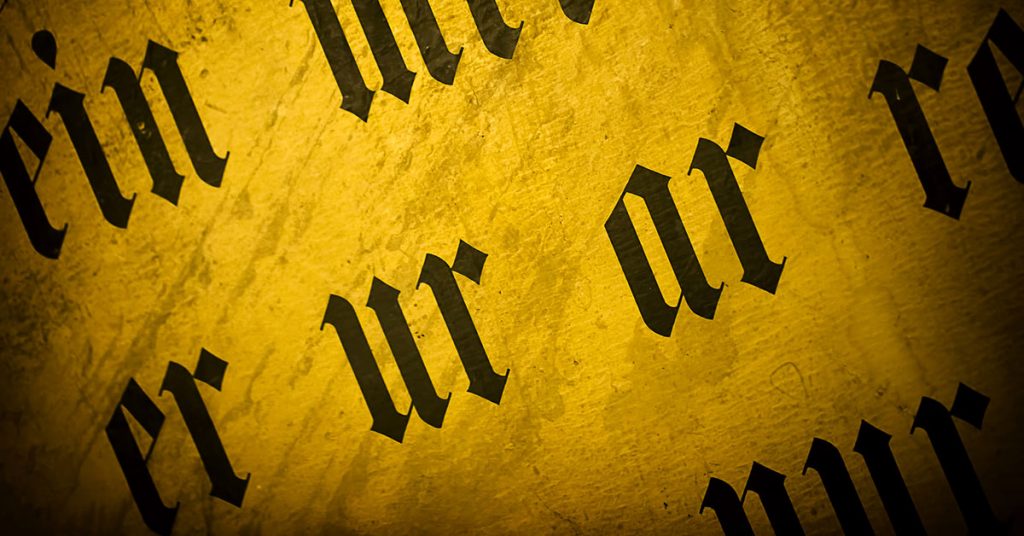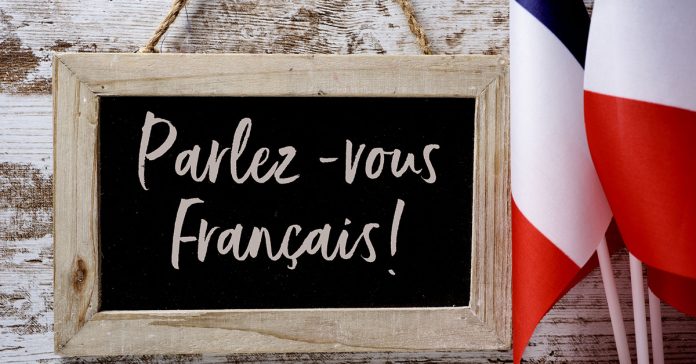The French language has been around since the Roman Empire – which is pretty incredible! But how did it come about, and how has it managed to survive so long? In this article, we’ll find out more about the history of the French language. These are just some of the great French language-learning resources available on this site.
Roman-Gaul

To get to the nitty gritty of why French as a language came about, and really understand history of the French language, we need to go all the way back to the Roman Empire, 2,000 years ago.
At the end of the Gallic War in 51BCE, any territory that was south of the Rhine became a Roman province. Thanks to this, more villages emerged, trade increased, and so did communication between the Romans and the Gauls. For five hundred years, vulgar (otherwise known as “oral Latin,” the language of the “common people”) existed alongside a Celtic language called Gaulish.
The thing with Gaulish, though, was that it was primarily an oral language. It had no written form. As such, its very survival in Romanised populaces was under threat.
Over time, vulgar took over from Gaulish as the number one native language of the region. As of today, just a hundred words among the 100,000 entries in the official French dictionary are Gaulish in origin. Most of these refer to animals and land-related objects. These include lamb (mouton) and path (chemin).
The Franks’ Ancestor

As history moved into the fourth century, numerous Franks were enjoying life in Northeast Gaul. They had joined the Roman army by now, but even after the Western Roman Empire fell, they remained in what we now know as France. King Clovis had managed to unify the people. Such support was important, and only possible because the Franks adopted the Gallo-Roman language and the Catholic religion.
The Franks, however, had a Germanic origin. This meant that they had to modify the musicality and pronunciation of their language. They incorporated new sounds and words – and they also gave France its name.
Political Birth
At the beginning of the 9th century, the Dark Ages were a period of widespread illiteracy in the population. As a result, the lay people couldn’t understand Latin. In 813, King Charlemagne ordered priests to use either a Germanic language known as Theotiscam when they were giving their sermons. This would allow the lay people to understand. And while such a decision may have seemed like a relatively minor thing, it actually gave birth to oral French. A key moment in the history of the French language.
After his passing, Charlemagne left behind a divided empire. Tensions were brewing between his three grandchildren, Louis the German, Charles the Bald and Lothair I. The tensions boiled over, and war ensued. Louis and Charles both took an oath in 842 that decreed they would fight in unison against Lothair. To show unity, they spoke each other’s language. For Louis, this meant adopting a proto-French language called Gallo-Roman, and for Charles it meant adopting Old High German. It also meant that French and German were now born. And while this early version of French was heavily reliant on Vulgar Latin, it had enough differences for us to recognise it as the first proper written form of French in history.
The Frankish Inheritance

The Gallo-Romance language was taking on many different dialects and forms by the tenth century. A number of languages were emerging in the north and south under the influence of the Franks: Languages of Oil were originating in the north while the languages of Oc were emerging in the south. The languages of the former included Frankish, Burgundy and Picard dialects, while languages in the south included Languedocian, Provencal and Auvergene dialects. Due to this breakup, people were adopting different variants of the same language.
Old French (Tenth to Thirteenth Centuries)
Latin was still the dominant language in law, education and religion. As time went on, though, the vernacular began to appear in written form. By the start of the 12th century, meanwhile, the troubadours were performing poems in their own dialects. The Song of Roland is a good example of this.
This version of Old French didn’t have any established rules, and was therefore open to many interpretations and variations when it came to writing and speaking. For this reason, there were some people who demanded a “re-Latinisation” of the language. By the mid-twelfth century, French included both Oc and Oil, until the Royal family took charge and instigated the widespread use of Oil across the country. It therefore became a symbol of power and unity.
Middle French (Fourteenth to Seventeenth Centuries)
France, like many European nations, experienced its blackest years throughout the fourteenth and fifteenth centuries, when both the Hundred Years’ War and The Plague swept through its land, killing millions of people. Today, we refer to the notes made by Francois Villon, who wrote in Middle French about this devastating epoch. Even today, the text is understandable to French speakers, even though some of the terminology is out of date. This is due to the changes in word order, the loss of declensions and other rudimentary alterations of the language. Today, the way Villon spelt some of the words seem humorous, but he was writing according to the fashion of his time. For example, the letters W and K did not appear, while Y was popular.
In the fifteenth century, with the Renaissance in full swing, the French language changed again. The printing press arrived on the scene. To allow for the widespread distribution of written texts, structures and rules were created and tightened for this burgeoning language. It was during this time that the vernacular language was officially recognised. In 1539, the Ordinance of Villers-Cotterets established French as the primacy for written laws.
Re-Latinisation

The Enlightenment saw the re-latinisation of French. This period saw the disappearance of several words that were not considered to derive from latin origin.
As a Lingua Franca
Students of the history of the French language, and especially Francophiles, may be shocked to read that at the start of the French revolution, less than 50% of France could actually speak French. Moreover, of those who could speak the language, only a very small percentage could hold a conversation. On the other hand, the language was popular with the higher and elite classes, and most European courts adopted it. It had even by now made its way across the Atlantic Ocean. Indeed, buoyed by the influence it was enjoying in the literary and political spheres, French was by now the world’s lingua franca. Only English would supplant it. All in all, the history of the French language is the story of contradictions and paradoxes.










